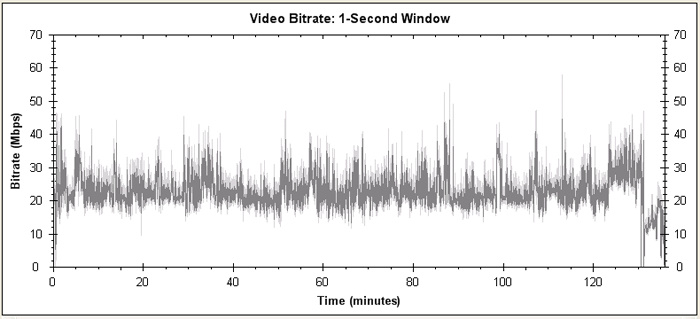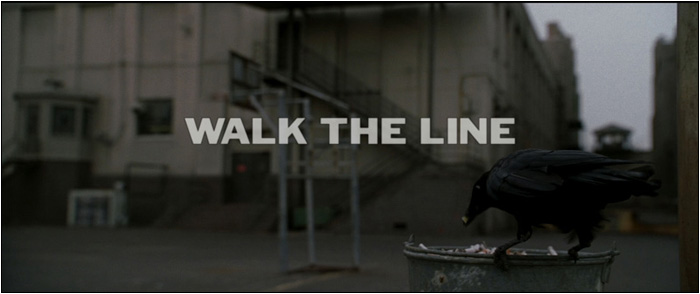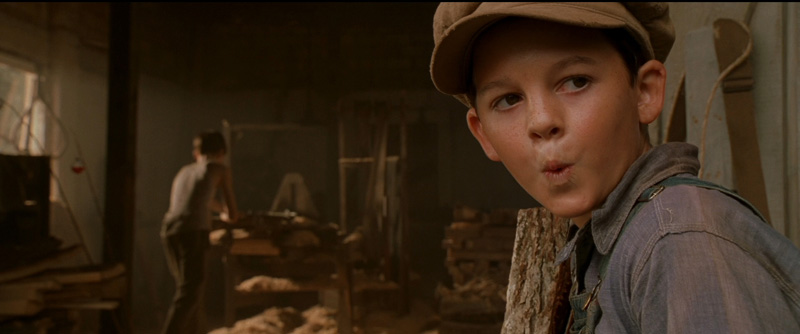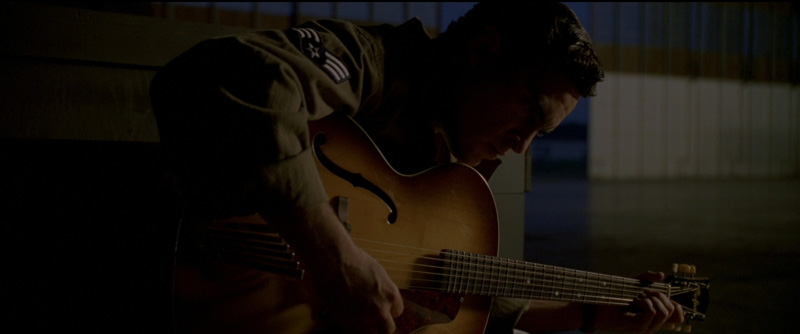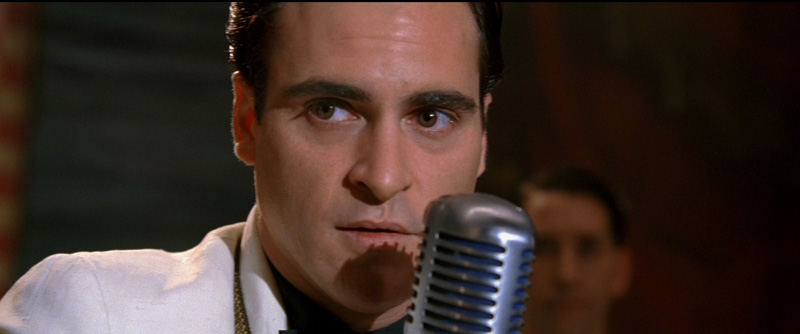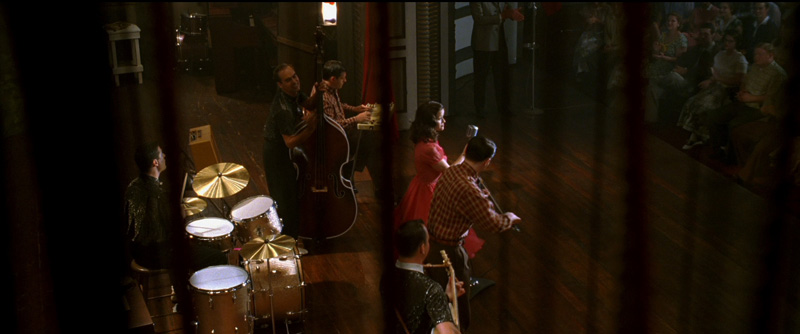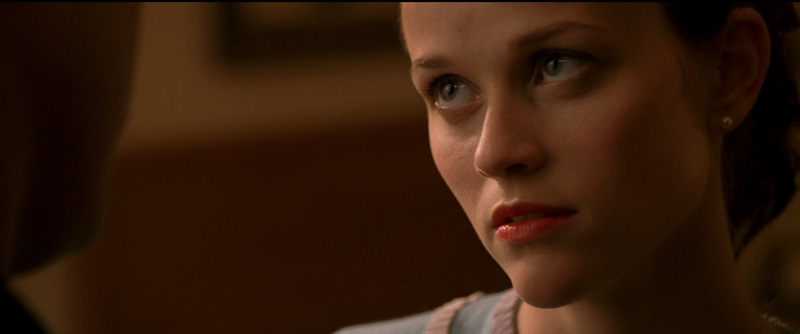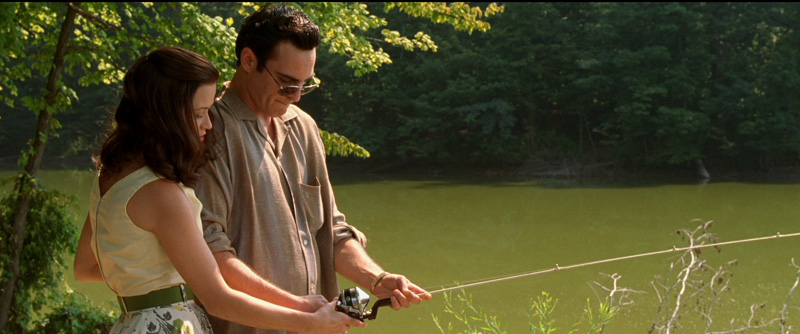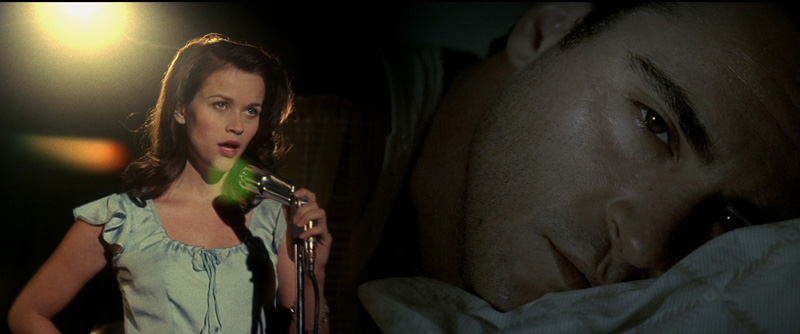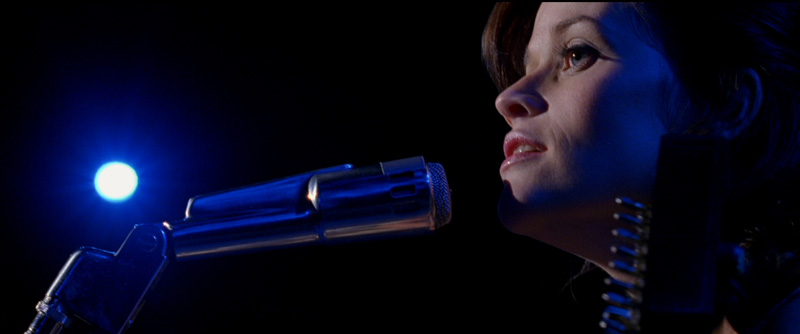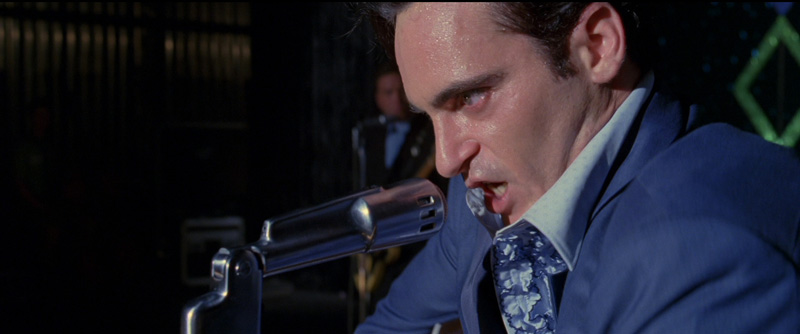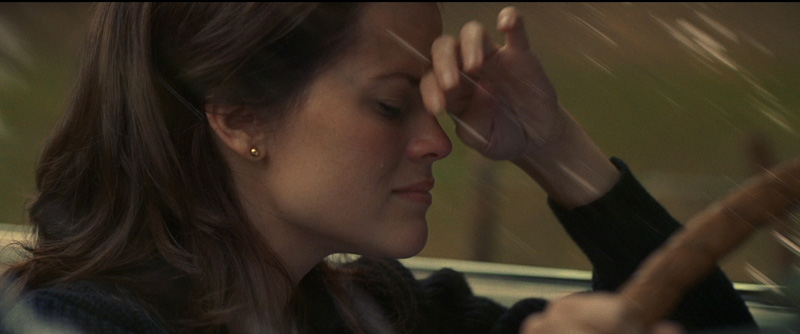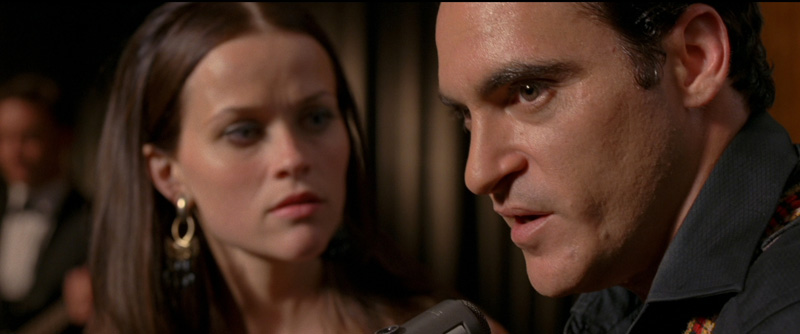Review by Leonard Norwitz
Studio:
Theatrical: Tree/Line & Catfish
Blu-ray: 20th Century Fox Home Entertainment
Disc:
Region: 'A'
(as verified by the
Momitsu region FREE Blu-ray player)
Runtime: 2:15:52.144
Disc Size: 40,176,013,368 bytes
Feature Size: 30,028,603,392 bytes
Video Bitrate: 22.87 Mbps
Chapters: 36
Case: Standard Blu-ray case
Release date: February 2nd, 2010
Video:
Aspect ratio: 2.35:1
Resolution: 1080p / 23.976 fps
Video codec: MPEG-4 AVC Video
Audio:
DTS-HD Master Audio English 3416 kbps 5.1 / 48 kHz / 3416
kbps / 24-bit (DTS Core: 5.1 / 48 kHz / 1509 kbps / 24-bit)
Dolby Digital Audio French 448 kbps 5.1 / 48 kHz / 448 kbps
Dolby Digital Audio Spanish 448 kbps 5.1 / 48 kHz / 448 kbps
Dolby Digital Audio English 224 kbps 2.0 / 48 kHz / 224 kbps
Dolby Digital Audio English 224 kbps 2.0 / 48 kHz / 224 kbps
Subtitles:
English, Chinese, French, Korean, Spanish, none
Extras:
• Audio Commentary by Co-Writer/Director James Mangold
• 10 Deleted Scenes w/ Optional Commentary (23:07)
• Folsom, Cash & The Comeback (11:40)
• Celebrating the Man in Black - Makig of Walk the Line - in
SD (21:30)
• Ring of Fire: Passion of Johnny & June (11:25)
• Extended Musical Sequences (5:35)
• Theatrical Trailer - in HD
The Film:
8
For Fox's new Blu-ray edition of Walk the Line, they have
settled on (rather than settled for) the original theatrical
cut, rather than the later "Extended Cut". The DVD was
pretty good, but what it lacked, primarily, that the Blu-ray
makes up for is a dynamite audio track – and, for a movie
awash in concerts, rehearsals and auditions, it's a much
appreciated course correction.
At the time of its release in 2005, there was some concern
as to the public's readiness to pay for a ticket to see yet
another biopic about a singer with a well documented
addiction. It really didn't help matters that Jamie Foxx won
his Oscar for his performance as Ray Charles (my feeling was
he was acknowledged for the wrong movie – it should have
been for Collateral, though in either case my vote would
have been for Di Caprio as Howard Hughes), making it that
much harder for us to root for a performance by guy playing
another damaged artist. But it turned out that Walk the Line
was more than a story about overcoming guilt and childhood
emotional abuse, it was a love story front and center, a
story about redemption because of the love of a woman.
Stories about addiction are now commonplace, and the concept
of "co-dependence" is generally understood, if a little
abused itself - a familiar tale of how one person in a
relationship, despite intentions as often as not, encourages
the addiction. What's not so common is a story where one
person holds fast, not so much out of the principle of
"tough love" but because it's fundamentally the right thing
to do – they were, after all, both married to other people
for much of the time they were colleagues on stage before
they married in 1968. To Johnny Cash, June Carter was not
only the girl of his boyhood infatuation, but an angel that
would become the means to a second (and a third and a
fourth) chance.
It was a bold move on the part of director/co-writer James
Mangold to have both Joaquin Phoenix and Reese Witherspoon
do their own singing (which Jamie Foxx did not do for the
most part). Even more than Ray Charles, Johnny Cash has a
sound that is not only iconic, but gets into one's very
bones. Phoenix was not going to be able to convey anything
like that with his voice, so it was left to his stage
presence and Mangold's direction and cutting to bring off
the impossible. It's amazing they came as close as they did.
As for Witherspoon, her performance on stage goes beyond
mere mannerism. She exudes the kind of confidence that only
a veteran since childhood (meaning June) could muster. It is
within that universe of professionalism that she responds to
or resists Johnny's intensely passionate, but sometimes near
out of control, invitations to connect – on stage and off.
Under Mangold's direction, June Carter is portrayed as
something of a saint, and perhaps that is even more
difficult to bring off in today's cynical world.
Image:
8/9
NOTE:
The below
Blu-ray
captures were taken directly from the
Blu-ray
disc.
The first number indicates a relative level of excellence
compared to other Blu-ray video discs on a ten-point scale.
The second number places this image along the full range of
DVD and Blu-ray discs.
I would describe the Blu-ray image as strong and generally
unremarkable. There is little about the transfer that brings
attention to itself – either because of any shortcomings or
due to any attempts to enhance the film for home viewing.
The Blu-ray looks decidedly filmic and not less like a
video, except for bright scenes such as the open fields in
what is taken to be Arkansas, which are curiously grainy.
Blacks are deep, flesh tones in the proper light are
remarkably lifelike, as is sharpness and resolution.
Contrast handles the extremes of concert stage lighting as
well as the shadows of despair that Cash's depressive drug
use would visit. I found no defects in the source elements,
or disparaging DNR or other artifacts.
CLICK EACH
BLU-RAY
CAPTURE TO SEE ALL IMAGES IN FULL 1920X1080 RESOLUTION
Audio & Music:
8/8
I looked over my notes about the movie when it came out in
2005:
I wonder if anyone besides me appreciated the effect of Ted
Caplan's sound design for Walk The Line. Not only did he and
his engineers manage to capture just the right timbre for
Joaquin Phoenix to sound even more like Johnny Cash, without
it seeming contrived, but they also nailed the ambiance of
every venue Cash and his fellow travelers played in. If you
know the Folsom Prison LP, then you ought to be amazed at
how like that sound the movie is.
One thing we can do at home that we can't in the theater is
to advance quickly to another scene to compare audio
quality. What I was looking for was adequate distinction
among the various concert venues which is what I thought I
heard in the theater. Alas, except for Folsom Prison, this
was not to be. The impression is that every number was
recorded separately in much the same circumstances but with
only slight changes in balance, but nothing like what would
have been the case in reality. This may be an unfair test
because we absolutely accept each venue as it comes along
because the visuals are so remarkably different. That said,
the impression of a live performance is palpable, especially
with that fat bass that generally fixates itself into
concert audio – which is, by the way, the main reason why I
can't abide concert performance despite the live musicians.
The Folsom Prison concert goes to the trouble of
acknowledging the effect of a low ceiling in a large room.
As for the rest of the movie, the surrounds are largely used
for ambiance. Dialogue is always clear and centered. And, if
I haven't made this clear, the surrounds are well used to
place us in the audience at the concerts.
Operations:
6
There are many chapters (36) but, oddly enough, they don't
typically sort themselves out with the musical numbers. A
second chapter menu that would have done just that would
seem obvious. On the other hand, I loved the menu design,
which is as informative and efficient as it is graphically
affecting.
Extras:
6
There is a two disc DVD of this movie that incorporates a
few more extra features. It passes understanding that all of
them do not find their way into the Blu-ray. Mangold's
commentary is quite good. I like how he starts out by
reading his screenplay behind the opening scene outside the
prison, making the point that a screenplay isn't just
dialogue. As expected, he visits all aspects of production
and casting with equal intelligence.
Besides the deleted scenes, with or without Mangold's
comments, there are four extras, one about how the Folsom
Prison concert became the turning point in Cash's career;
another that concentrates on the relationship between Johnny
and June; and one titled "Celebrating the Man in Black" that
looks more at the present movie, with a few scattered
remarks from the leads and crew. A familiar cast of
characters are seen and heard from throughout these
segments: friends; Johnny and June's son, John Carter Cash,
who exec-produced the movie; Kris Kristofferson and other
musicians and historians; but, we see little of Johnny or
June except a fragment or two of archive footage and a few
photo stills.
But my big gripe, as it is with every Blu-ray I've come
across, is that the musical bonus feature is done with
conventional audio. It matters little if it's stereo or 5.1,
the flattening out of the sound is appalling – and so easily
corrected. While it's nice that three numbers are given are
given a more extended treatment in 1080p (and I could ask:
how extended could they be if the total time granted is
under six minutes), but the sound is good only to
demonstrate how excellent the DTS-HD MA is on the main
attraction.
|
 |
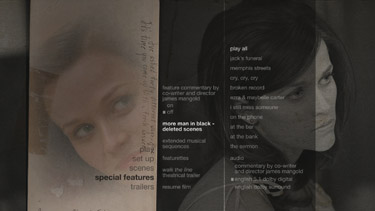 |
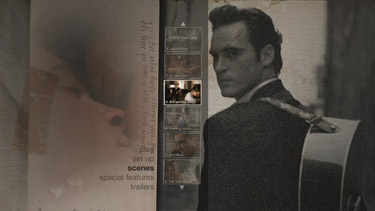 |
 |
 |
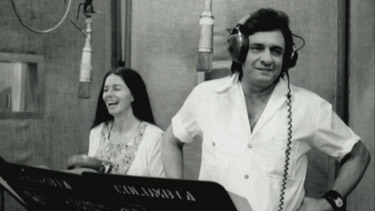 |
Bottom line:
8
Walk the Line is a pretty good movie by any standard you
care to measure it. It's a moving, personal story. The music
is invigorating. The performances of its leading actors and
the support of others less in the foreground are
outstanding: Both Robert Patrick as Johnny's abusive,
secretly guilt-ridden father and Ginnifer Goodwin as Cash's
first wife, Vivien, who gets seriously and, possibly
unfairly shat on in the film, get special mention. The
Blu-ray image is quite good, with the exception of some
unexpected grain here and there. The uncompressed audio does
a convincing job of suggesting the live concert experience.
The extras are a little repetitive, but worthwhile. Warmly
recommended.
Leonard Norwitz
February 6th, 2010
![]()
![]()

![]()
![]()
![]()
![]()

![]()
![]()


